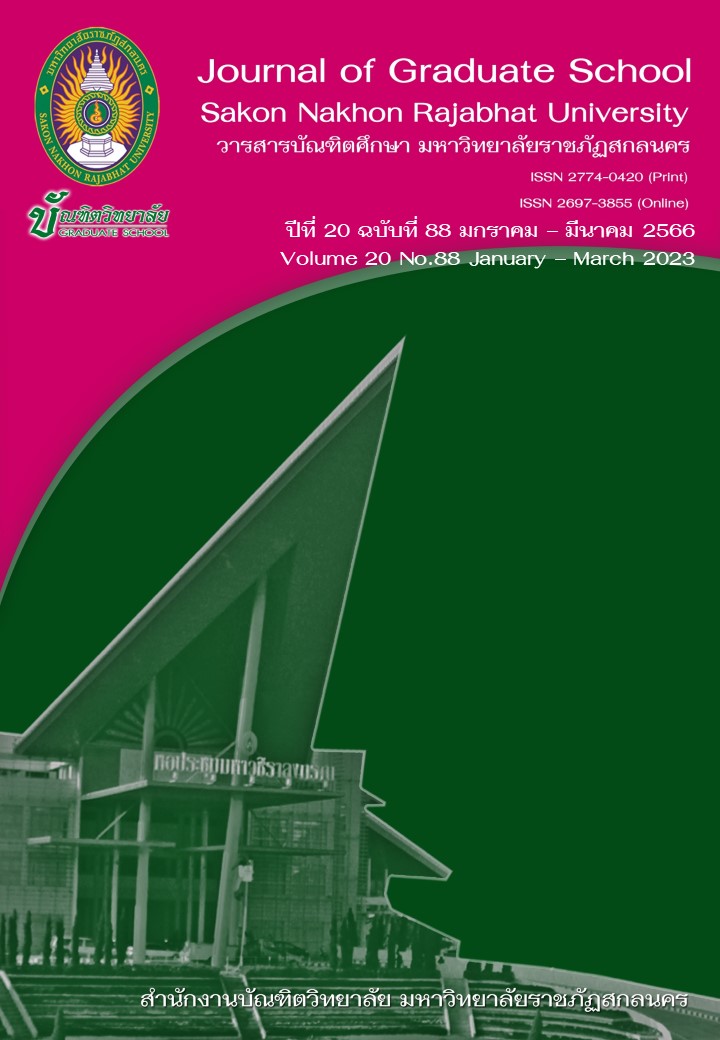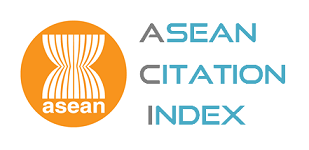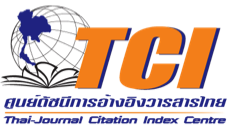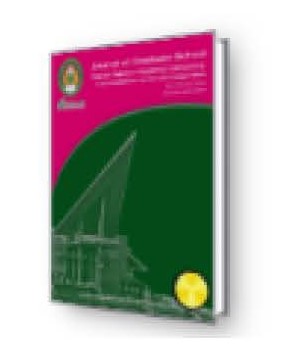การพัฒนาตัวบ่งชี้สมรรถนะครูสังคม ในศตวรรษที่ 21 สังกัดสำนักงานเขตพื้นที่การศึกษาประถมศึกษาบึงกาฬ
Keywords:
21st Century, Indicator Development, Social Studies Teachers’ CompetencyAbstract
This study aimed to 1) develop competency indicators for social studies teachers in the 21st century, and 2) test the consistency of the structural model of those competency indicators. A sampling group, obtained through multi-stage random sampling, consisted of 352 teachers and educational personnel working under Bueng Kan Primary Educational Service Area Office. The research instrument was a five-point rating scale test with the content validity context between 0.80 -1.00, the discriminative power (r) equaling 0.23 to 0.87, and the reliability of 0.92. The data were analyzed by basic statistics and confirmatory factor analysis (CFA).
The findings were as follows:
1. The model for measuring the social studies teachers’ competency in the 21st century consisted of seven latent variables, and 21 manifest variables, including classroom management, personalities, social studies learning management, knowledge and skills, communication skills, attitudes toward teaching professions, and curriculum efficiency.
2. The developed model was consistent with the empirical data having Chi-square equaling 9.642, degrees of freedom (df) equaling 8, GFI equaling 0.992, CFI equaling 0.998, RMR equaling 0.004, and RMSEA equaling 0.024. The factor loadings were in the range of 0.548– 0.748, including communication skills with a factor loading of 0.548, followed by personalities with a factor loading of 0.650, attitudes toward teaching professions with a factor loading 0.667, classroom management with a factor loading of 0.683, knowledge and skills with a factor loading of 0.715, curriculum efficiency with a factor loading of 0.748, and social studies learning management with a factor loading of 0.765, respectively.
References
ฐิติยา อัลอิดรีสี. (2552). การพัฒนาตัวบ่งชี้การส่งเสริมการเรียนรู้อย่างมีความสุขของนักเรียนช่วงชั้นที่ 3 ในจังหวัดปัตตานี. วิทยานิพนธ์ กศ.ม. สงขลา: มหาวิทยาลัยทักษิณ.
นครชัย ชาญอุไร. (2560). การวิจัยทางการศึกษา. อุดรธานี: หจก.โรงพิมพ์บ้านเหล่าการพิมพ์ 1993.
นิตยา พรมพินิจและคณะ. (2558). การพัฒนาตัวบ่งชี้คุณภาพชีวิตครูสังกัดสำนักงานเขตพื้นที่การศึกษาประถมศึกษาสกลนคร เขต 2. วารสารมหาวิทยาลัยนครพนม, 5(3) 42-47.
ประกิต สิงห์ทอง และคณะ. (2560). การพัฒนาตัวบ่งชี้สมรรถนะครูในศตวรรษที่ 21 สังกัดสำนักงานเขตพื้นที่การศึกษประถมศึกษาในภาคตะวันออกเฉียงเหนือ. วารสารบริหารการศึกษา มหาวิทยาลัยขอนแก่น, 13(1), 64-76.
ยนต์ ชุ่มจิตร. (2553). ความเป็นครู. กรุงเทพฯ: โอเอส พริ้นติ้งเฮ้า.
ศิริชัย กาญจนวาสี. (2550). ทฤษฏีการประเมิน. (พิมพ์ครั้งที่ 5). กรุงเทพฯ: จุฬาลงกรณ์มหาวิทยาลัย.
สุชาติ ประสิทธิ์รัฐสินธุ์ และกรรณิการ์ สุขเกษม. (2551). วิธีวิทยาการวิจัย เชิงคุณภาพ: การวิจัยปัญหาปัจจุบันและการวิจัยอนาคตกาล. (พิมพ์ครั้งที่ 2). กรุงเทพฯ: สามลดา.
สุวัฒน์ งามยิ่ง. (2547). คุณลักษณะครูที่ดีของครู - อาจารย์วิทยาลัยสารพัดช่าง สังกัดสถาบันการอาชีวศึกษาภาคกลาง 1 และภาคกลาง 5. สารนิพนธ์ กศ.ม. กรุงเทพฯ: บัณฑิตวิทยาลัย มหาวิทยาลัยศรีนครินทรวิโรฒ,
องอาจ นัยพัฒน์. (2544). ตัวบ่งชี้ เกณฑ์ และมาตรฐานในการประเมิน. วารสารวัดผลการศึกษา, 22(64), 43-56.
Clark, B.I. (1995). Understanding Teaching: An Interactive Multimedia Professional Development Observational Tool for Teacher. Dissertation Thesis, Ph.D. Arizona State University. Department of Education, Training and Employment, Queensland Government. 2557. Quality of a Good Teacher.
Yamane, T. (1976). Statistics: An introductory analysis. (2nd ed.). New York: Harper and Row.
Downloads
Published
How to Cite
Issue
Section
License
Copyright (c) 2023 Journal of Graduate School Sakon Nakhon Rajabhat University

This work is licensed under a Creative Commons Attribution-NonCommercial-NoDerivatives 4.0 International License.
บทความทุกบทความที่ตีพิมพ์ในวารสารบัณฑิตศึกษา มหาวิทยาลัยราชภัฏสกลนคร ถือว่าเป็นลิขสิทธิ์ของบัณฑิตวิทยาลัย มหาวิทยาลัยราชภัฏสกลนคร










